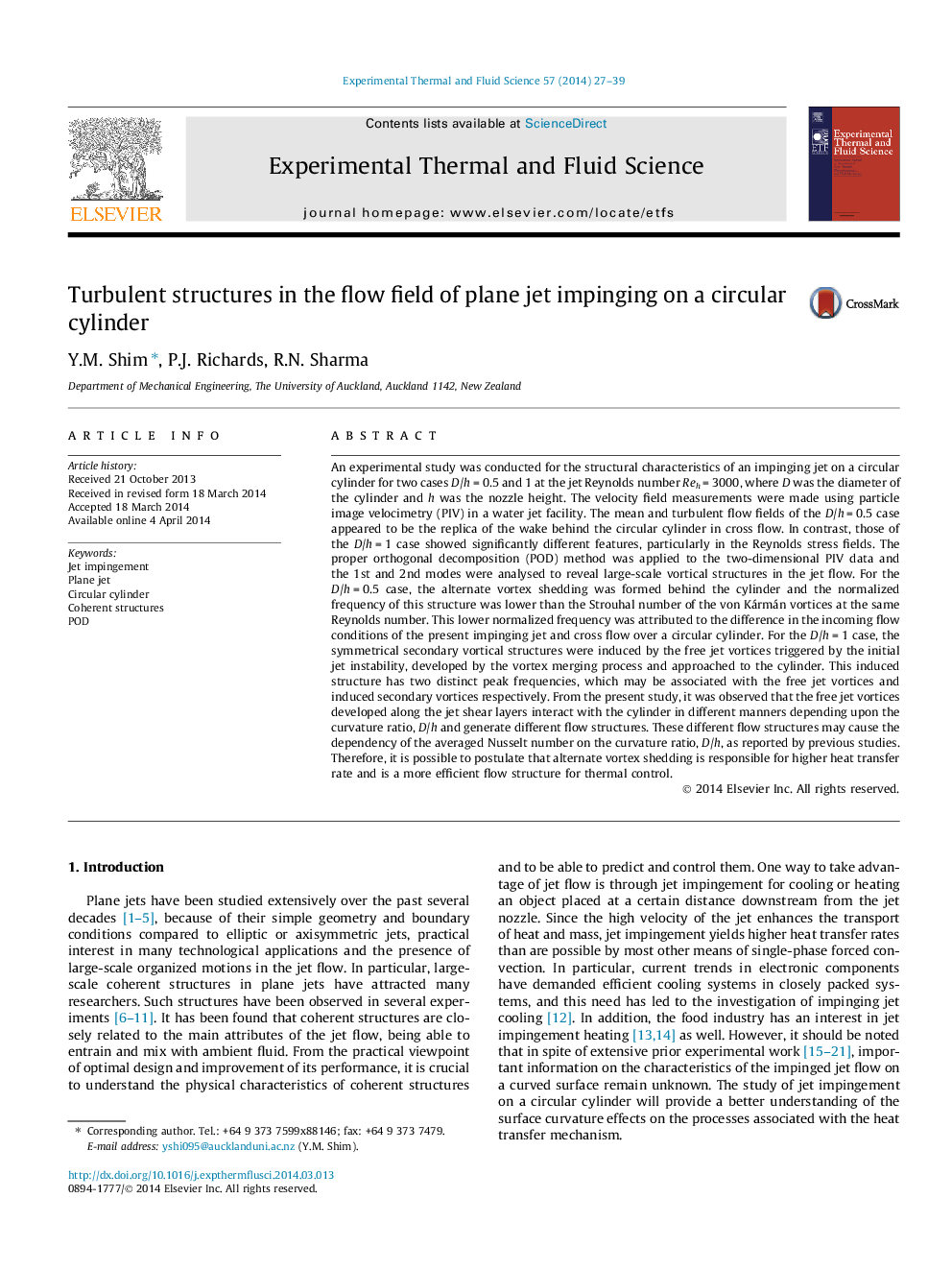| Article ID | Journal | Published Year | Pages | File Type |
|---|---|---|---|---|
| 651586 | Experimental Thermal and Fluid Science | 2014 | 13 Pages |
•For the D/h = 0.5 case, the alternate vortex shedding was formed behind the cylinder.•The frequency characteristic of this structure was also revealed.•For the D/h = 1 case, the symmetrical secondary vortical structures were induced.•This induced structure has two distinct peak frequencies.•The free jet vortices interact with the cylinders and generate different structures.
An experimental study was conducted for the structural characteristics of an impinging jet on a circular cylinder for two cases D/h = 0.5 and 1 at the jet Reynolds number Reh = 3000, where D was the diameter of the cylinder and h was the nozzle height. The velocity field measurements were made using particle image velocimetry (PIV) in a water jet facility. The mean and turbulent flow fields of the D/h = 0.5 case appeared to be the replica of the wake behind the circular cylinder in cross flow. In contrast, those of the D/h = 1 case showed significantly different features, particularly in the Reynolds stress fields. The proper orthogonal decomposition (POD) method was applied to the two-dimensional PIV data and the 1st and 2nd modes were analysed to reveal large-scale vortical structures in the jet flow. For the D/h = 0.5 case, the alternate vortex shedding was formed behind the cylinder and the normalized frequency of this structure was lower than the Strouhal number of the von Kármán vortices at the same Reynolds number. This lower normalized frequency was attributed to the difference in the incoming flow conditions of the present impinging jet and cross flow over a circular cylinder. For the D/h = 1 case, the symmetrical secondary vortical structures were induced by the free jet vortices triggered by the initial jet instability, developed by the vortex merging process and approached to the cylinder. This induced structure has two distinct peak frequencies, which may be associated with the free jet vortices and induced secondary vortices respectively. From the present study, it was observed that the free jet vortices developed along the jet shear layers interact with the cylinder in different manners depending upon the curvature ratio, D/h and generate different flow structures. These different flow structures may cause the dependency of the averaged Nusselt number on the curvature ratio, D/h, as reported by previous studies. Therefore, it is possible to postulate that alternate vortex shedding is responsible for higher heat transfer rate and is a more efficient flow structure for thermal control.
